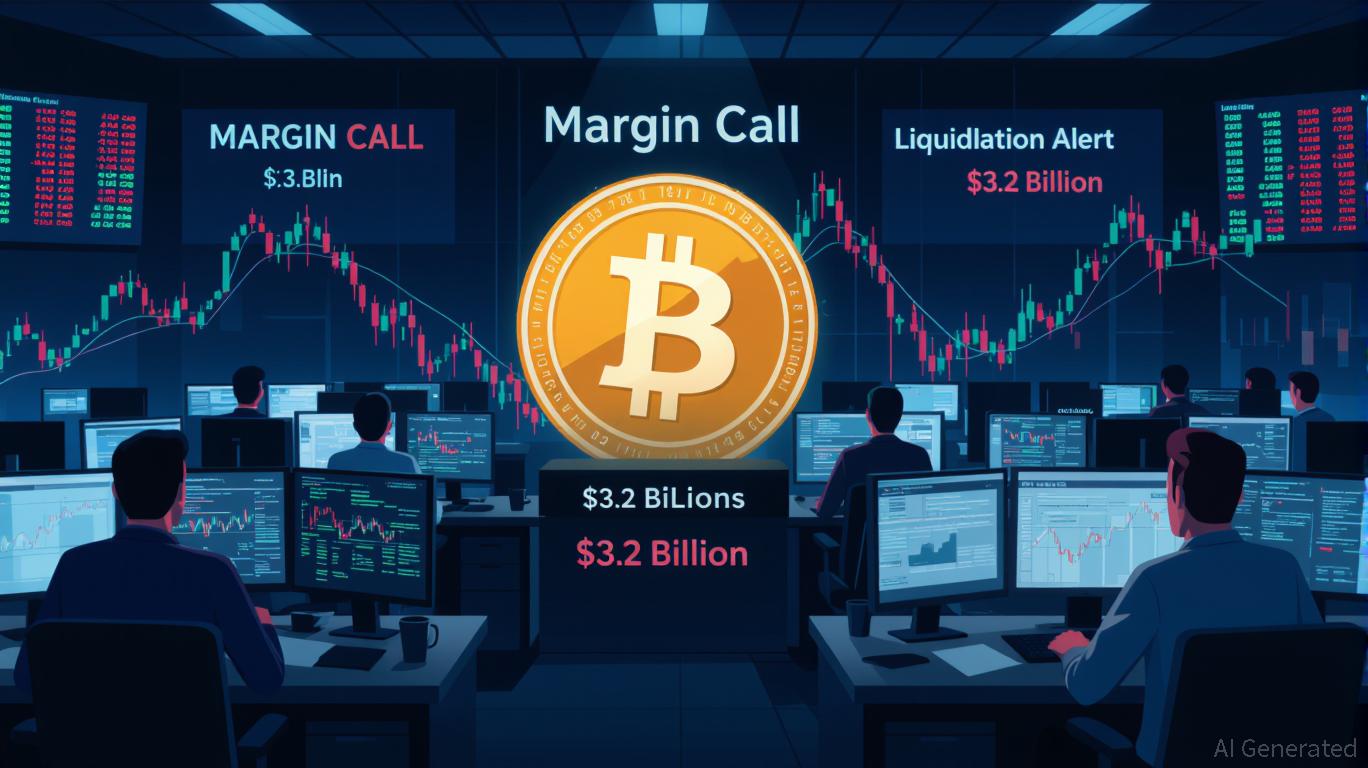Bitcoin News Today: Traditional Finance Liquidity Changes Fail to Impact Bitcoin Despite Trade Agreement
- U.S.-China trade deal announced Nov 1, 2025, failed to move Bitcoin’s price amid stable $110,000 range. - Analysts attribute Bitcoin’s flat performance to TradFi dominance in liquidity, shifting from retail speculation to institutional stability. - Trade deal’s supply chain reforms and stablecoin growth (e.g., Western Union’s USDPT) may indirectly boost Bitcoin liquidity long-term. - Provisional agreement terms (expiring by late 2026) and geopolitical risks limit immediate crypto market reactions despite
The historic trade pact announced between the United States and China on November 1, 2025,

The details of the U.S.-China trade pact, outlined in a
Market observers attribute Bitcoin's steady performance to evolving market conditions. "We're witnessing a transition from early adopters who thrived in volatile times to a new wave of traditional finance participants who favor stability," one analyst noted in a recent publication. This shift indicates that long-term holders are selling to institutions seeking less risky, more stable assets. The pattern mirrors broader financial trends, as established financial firms increase their Bitcoin exposure while retail speculation declines.
The broader economic effects of the trade deal could indirectly impact Bitcoin, particularly through the integration of stablecoins and traditional finance.
At the same time, the trade pact's emphasis on agricultural and industrial supply chains may influence crypto demand in sectors such as logistics and energy. For example, U.S. soybean growers could see gains from China's pledge to buy 25 million metric tons annually, potentially boosting business revenues and reducing uncertainty. Still, these macroeconomic shifts tend to affect Bitcoin's price indirectly or with a delay, as it remains more responsive to monetary policy and institutional investment patterns.
Importantly, the temporary nature of the agreement—with many provisions set to lapse by late 2026—adds to market unpredictability. While the deal offers short-term relief from trade disputes, its long-term effectiveness is uncertain, discouraging bold moves in both stock and crypto markets. This caution is further heightened by global geopolitical issues, such as
Looking ahead, Bitcoin's direction will likely be shaped by stablecoin activity and institutional participation. The Stablecoin Supply Ratio (SSR), which compares Bitcoin's market value to stablecoin reserves, has reached levels historically associated with bearish sentiment, hinting at a possible price floor. However, confirmation will depend on continued capital inflows and further development of traditional finance infrastructure, such as
Disclaimer: The content of this article solely reflects the author's opinion and does not represent the platform in any capacity. This article is not intended to serve as a reference for making investment decisions.
You may also like
Bitcoin Leverage Wipeout Event in November 2025
- November 2025's 10% Bitcoin drop triggered $3.2B in liquidations, exposing overleveraged positions and systemic risks in crypto markets. - ETF outflows ($318M in one day) and Ethereum/XRP struggles highlighted waning investor confidence and thin liquidity exacerbating volatility. - Retail investors faced repeated margin call crises, with November's event reinforcing vulnerabilities after October's $19B liquidation. - Institutional alternatives like RockToken emerged to mitigate risks, while regulators fa

Bitcoin Experiences Significant Price Rally in November 2025: Uncovering the Factors Behind Growing Institutional Interest
- Bitcoin surged past $96,000 in Nov 2025 driven by institutional adoption, Fed rate cuts, and geopolitical tensions. - RockToken's structured products and firms like Strategy/Emory University boosted institutional Bitcoin holdings via ETFs and direct purchases. - Fed's 25-basis-point rate cut and dollar weakness, plus Middle East conflicts, elevated Bitcoin's safe-haven appeal over gold . - BlackRock's ASX Bitcoin ETF expansion and volatile ETF flows highlight regulatory risks but confirm institutional co

Rate Cut Odds Fall Below 50 %, Tension Rises

Alibaba and JPMorgan Circumvent Stablecoin Restrictions Using Deposit-Token Trading Platform
- Alibaba and JPMorgan to launch Agentic Pay, a blockchain-based B2B payment system using deposit tokens to bypass China's stablecoin regulations by 2025. - The platform enables instant cross-border USD/euro settlements via tokenized deposits, reducing costs while complying with Beijing's state-linked digital finance preferences. - Integrating AI for automated contract generation and supplier comparisons, Agentic Pay aims to transform global trade with recurring revenue models and yield-bearing features. -
